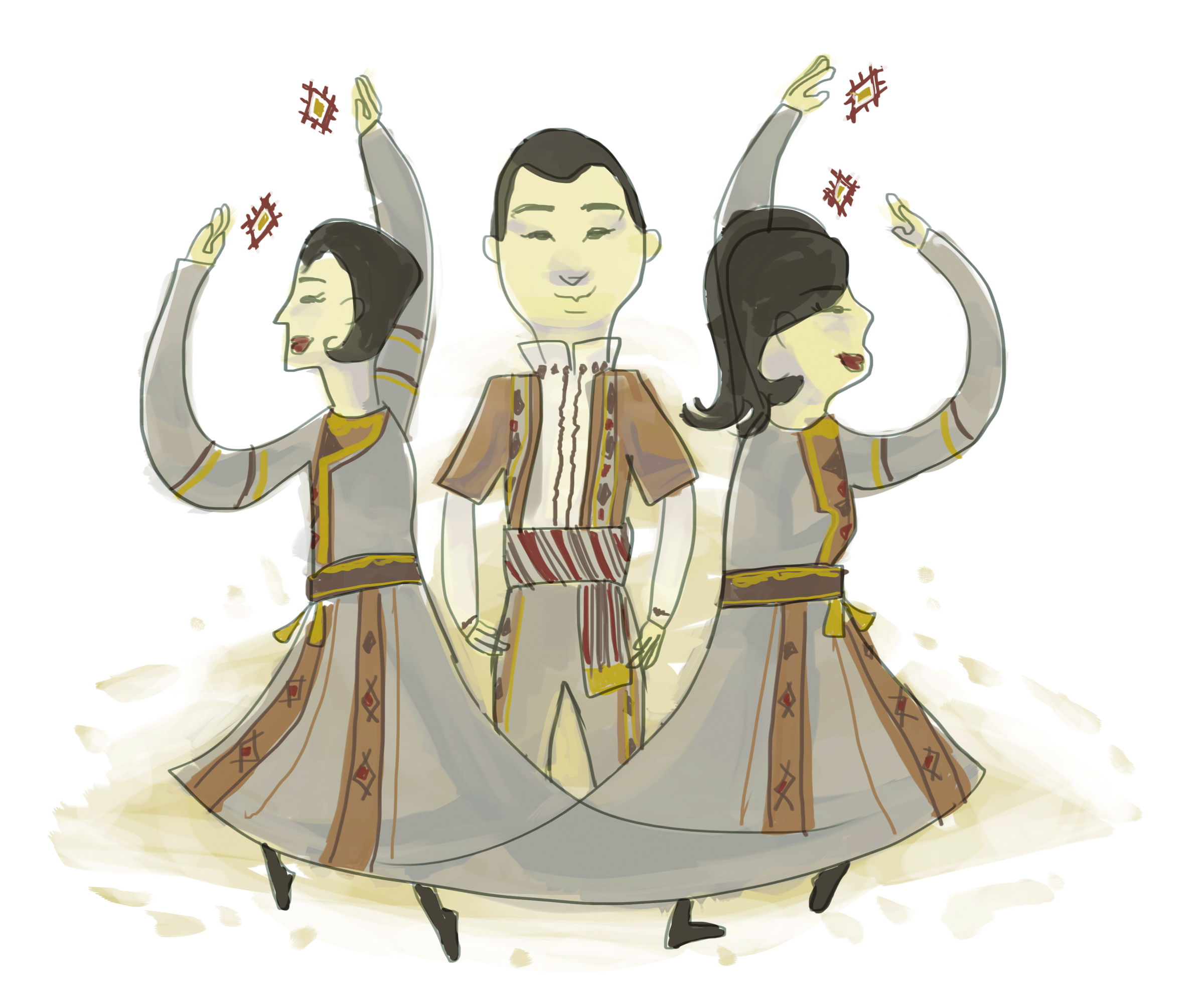Armenian Dance Group depicts family tradition, history

By Lynn Chu
March 4, 2013 12:11 a.m.
No formal training necessary, most Armenian families find time to practice their moves and rhythmic footwork on the vinyl dance floor found at family gatherings as opposed to studios lined with mirrored walls.
“I personally have never been to a family party without dancing,” said Lyolya Hovhannisyan, a third-year neuroscience student. “For a lot of Armenian families, it’s a way of coming together and so it’s very commonplace.”
In fall of 2012, Hovhannisyan decided to form an Armenian Dance Group on campus by organizing a meeting for interested students of the UCLA Armenian Students’ Association to attend. With an initial interest from three members, the team has since grown to 11 dancers and continues to expand. Today, the Armenian Dance Group will put on its first performance with three group dances and one solo piece as part of the Armenian Cultural Festival taking place in Bruin Plaza.
These performances will draw from musical selections ranging from folk and traditional to pop and prominent modern compositions, including “Hanina” by Armenian composer Khachatur Avetisyan.
The history of Armenian dance traces back to an era when the Armenian monarchy reigned and the dances reflected events that took place in those times.
“Armenian dance has definitely evolved over the centuries,” said Armine Sanosyan, a first-year biology student and one of the choreographers for the group. “(Back then), it was more war-like because of the time setting, so there were a lot of lines and stiff movements.”
The Armenian Dance Group will perform one of these battle dances called “Qersti.” In this dance, performers are aligned into two rows to signify fortresses that are both physically protecting the land and symbolically preserving the culture from invasions by neighboring empires.
“‘Qertsi’ has been passed on through the years so it’s very reflective of our culture,” Hovhannisyan said. “It’s also one of my favorite ones because you are yelling (while going) back and forth and you are on your feet the whole time. It’s very fast-paced and exciting.”
Paytsar Topchyan, a third-year biology student and the vice president of the UCLA Armenian Students’ Association, said this opening routine for their show leans more on the basic side, as not everyone in the group has learned Armenian dance in a formal setting. In fact, the spectrum of experience among these members ranges from having danced long term with other teams to having no experience at all.
“When I was a kid, I used to go to Armenian dance with my sister. I liked it as a kid but wasn’t the best at it. As I grew up, I got out of dance,” Topchyan said. “But I know that one of the girls (on the team) came to the United States when she was 10 and did the Armenian dance team when she lived in Armenia.”
Sanosyan, who has been dancing for an Armenian dance group since the age of 10, remains one of the more experienced members on the team. Along with Topchyan, the two co-choreographed one of the group routines.
“I don’t remember much from Armenian dance so it was a wake-up call that I needed to learn more,” Topchyan said. “I would think of the moves but I wouldn’t know how to piece it together.”
That’s where Sanosyan came in to blend and transition the choreography. Topchyan said that despite the challenge of putting together a dance for the entire team, they managed to create a routine that balanced interesting aesthetics with a moderate difficulty that all members could learn.
In the future, the team hopes to branch out to the international genre of dance, exposing themselves to everything from Russian, Greek, Turkish and even Chinese.
Sanosyan said Armenian dance groups like to be multicultural by depicting the relations they have with other ethnic communities. In fact, it’s become a trademark of Armenian dance groups to perform dances outside of their own cultural niche.
“We don’t mean to recreate their cultural dances,” Sanosyan said. “It’s enjoying that (people are) multicultural and that we enjoy these (histories) as well.”
For this reason, Sanosyan said she hopes students who are not Armenian will also join the group. Not only will this help the dance team learn more about other backgrounds, but it will also prevent the meaning of these dances from getting lost in translation.
“I definitely hope to reach out to more of the UCLA community and expand to have people of different heritages and backgrounds learn with us,” Hovhannisyan said. “They’ll be able to add a lot to our team and that’s a great aspect to add to any organization.”


